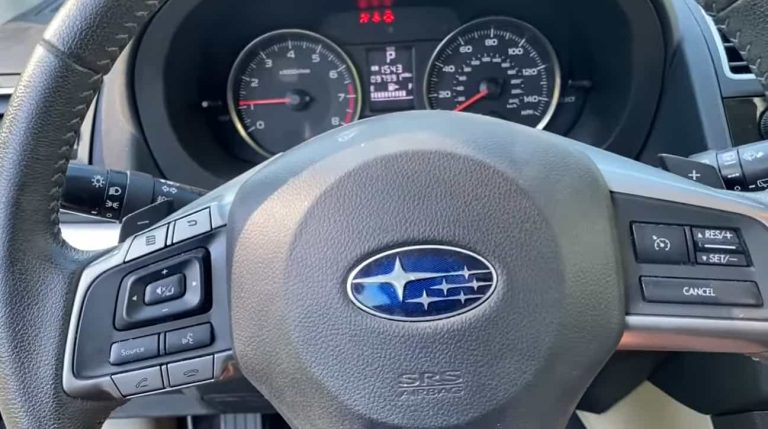Do you worry about your Subaru steering wheel controls not working?
You may have noticed that the control buttons on your steering wheel have been malfunctioning. Now, these buttons make your life easier since you can quickly control your vehicle’s functions by pressing these buttons. But once they become faulty, it leaves you wondering what just happened.
So today, we will explain the most common reasons behind this issue and what you can do about it. Let’s get started.

Causes Of Subaru Steering Wheel Controls Not Working
There are certain causes of the steering wheel controls malfunctioning. Below are just some of them and what you can do to fix these issues.
1. Clockspring problems
Your steering wheel has a clock spring, which is a very important part that connects your electrical system to numerous controls such as the horn, airbag, and the buttons of your steering wheel. It is found between your steering wheel column and the steering wheel.
With this component, electrical connection can stay intact as you turn your steering wheel. But as time passes by, this component may fail because of damage. Therefore, there is an electrical connectivity loss and you will not be able to use your steering wheel buttons.
If you think this is the reason why your steering wheel controls are not working, you may want to check other relevant components. The airbag light may illuminate when you have a problematic clock spring. This happens when there is no electrical connection for your airbag to deploy. So, it is good to use your OBD II scanner to check for fault codes.
Additionally, you need to check if your horn is still working. Since the clock spring also ensures an electrical connection for your horn to make a sound, you will not be able to use it. So, it is best to avoid driving your vehicle if the horn has become faulty as this can lead to potential accidents when you are unable to warn other drivers.
A clock spring replacement may be needed to address this issue. But do keep in mind that it is a complex process requiring special tools and skills. We recommend having a specialist to work on it to avoid further damage.
If your steering wheel controls stopped working, it may be due to button issues. Perhaps these have become worn out because of frequent use, over time. But it may also be due to debris or dirt stuck in them. Consider applying a special cleaning material that will help to eliminate the dirt without causing damage to the electrical contacts and components.
You may also need to replace the buttons that have become worn out. It is not a complex process and you should be able to do this at home with only very simple tools.
3. Glitch in the software
Sometimes, the infotainment system may have incurred a glitch, which can prevent your steering wheel controls from working. A reset of your onboard computers can help at times. Simply disconnect your vehicle battery and leave it on for 15 minutes before putting it back.
However, be sure to observe proper care when doing this since it can be dangerous when you do it wrong.
4. Wire or connector issue
Your clock spring is not the only potential component that can cause your steering wheel controls to malfunction. The wiring also needs to be checked since if this is broken, loose, or damaged, then the buttons will not work either.
Check for a broken wire or faulty connector in your steering wheel system. This may be a difficult task, however, since it would require specialised skill. The components are also hidden inside your steering column, so it can take time to access them properly and perform the work.
Therefore, we recommend that you take your vehicle to a professional who can do the job for you and make sure favorable results are achieved from the repairs made.
Read More: Is The Subaru Equity Shield Worth It? Find Out More!
Bottom Line
There are many reasons why your Subaru steering wheel controls may fail to work. However, it is important to find the actual cause of the problem through proper diagnosis to carry out the right technique that will fix the issue. It also helps to consult a specialist in the event that a more invasive repair or replacement is needed since this would require specialized skills and tools.

